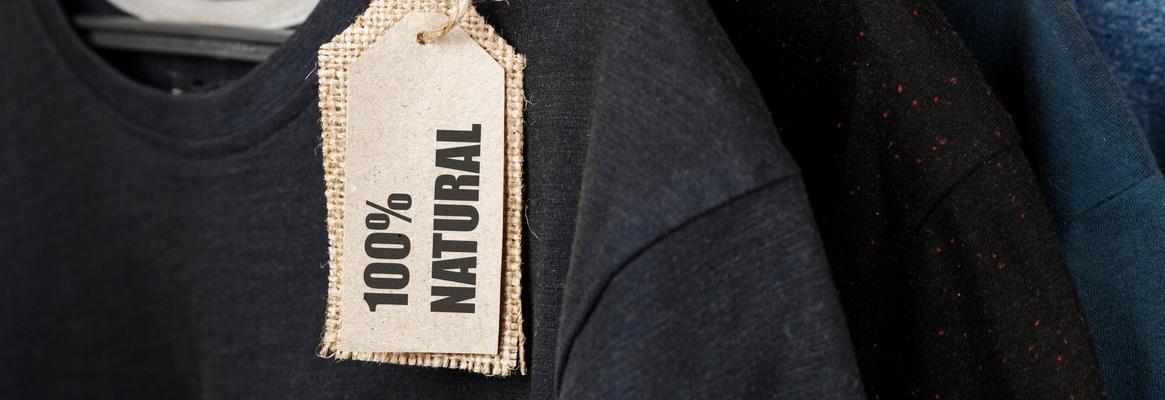The fashion industry has always been known to cause major pollution in terms of landfills and release of tonnes of plastic microfibres into the ocean. In such a scenario, a very encouraging fact coming to the rescue is - generation z and millennials coming out in support of sustainable fashion brands and willing to pay a price to stay greener.
As much as 20 per cent to 35 per cent of all primary source micro plastics in the marine environment are from synthetic clothing and the fashion industry is responsible for a shocking 4 to 10 per cent of global greenhouse-gas emissions every year (1).
In the modern world of 2021, gen-z are the most conscious generation (2). When it comes to sustainability, the younger generations are showing more care and need for sustainable fashion products and this has already made a visible impact on the way generation z spend their money. "Nine in ten generation z consumers believe companies have a responsibility to address environmental and social issues" (3).
Because of the vast amount of young people becoming more conscious about the types of products they buy and how they impact the world, this has caused some of the fashion industry to steer in a greener direction. Independent fashion labels are becoming more recognised for their commitments in creating sustainable products, being brand activists and building an aim to positively impact the planet.
Gen z and millennials are not only turning away from unsustainable brands but are embracing and willing to pay more for sustainable products. Surveys of gen z members (2) have shown that 73 per cent of them are willing to pay more for sustainability, a majority of which were willing to pay up to a 10 per cent premium. Youngsters are the leading voice in sustainability and will pay the price to be greener - this is a massive step in the right direction and sustainable brands are becoming more championed along the way.
Alongside this, gen z and millennials are about to become the largest consumer base in the global economy accounting for about 40 per cent of global consumers this year, and who have a "spending power of $143 billion" (4). Therefore, the future is looking bright for fashion sustainability if numbers of youngsters who are passionate in bettering the world keeps increasing.
Saying this, some of the biggest fast-fashion brands are still being championed by this same younger generation and highlights how necessary it is for sustainable fashion to take full force. Consumers buy more clothes per person in the UK than any country in Europe which leads to around 300,000 tonnes of used clothes being burned or buried in landfill each year (5).
According to figures from the United Nations Environment Programme (UNEP), it takes 3,781 litres of water to make a pair of jeans, from the production of the cotton to the delivery of the final product to the store. That equates to the emission of around 33.4 kilograms of carbon. Also, every year half a million tonnes of plastic microfibres are dumped into the ocean, equivalent to 50 billion plastic bottles and as mentioned before, 20-35 per cent come from synthetic clothing. These microfibres cannot be easily extracted from the water and can spread throughout the food chain of marine wildlife.
The issues surrounding current fashion trends don't end there; as we have recently seen in social media and news outlets, human rights campaigners have brought to light force labour allegations of various ethnic groups (especially the Uyghurs community, a Muslim minority) in the Xinjiang region of China, in connection to the harvesting and processing of cotton. Xinjiang accounts for a fifth of the global cotton production and is where major western brands source this raw material.
Thankfully, there are several types of sustainable fabrics that are made using organic and regenerated materials and manufactured in more sustainable ways. Tencel for example, are branded Lyocell fibres produced using sustainably sourced wood like bamboo which is the fastest growing grass-like tree that requires very little water and space to grow. The process to create these fibres requires dissolving the raw material's pulp and then reconstituting it by dry jet-wet spinning. In comparison with other fibres, Lyocell production does not use harmful carbon disulphide, which is highly toxic to humans and the environment. Also, the water and chemicals used during this process is reused in future manufacturing making it a fully circular system.
Generation z has the power to tackle the fast fashion issue and the tools available to drive awareness towards more sustainable brands. Social media is a hugely important channel that can be used to start conversations, raise awareness and show support for people doing the same.







Comments